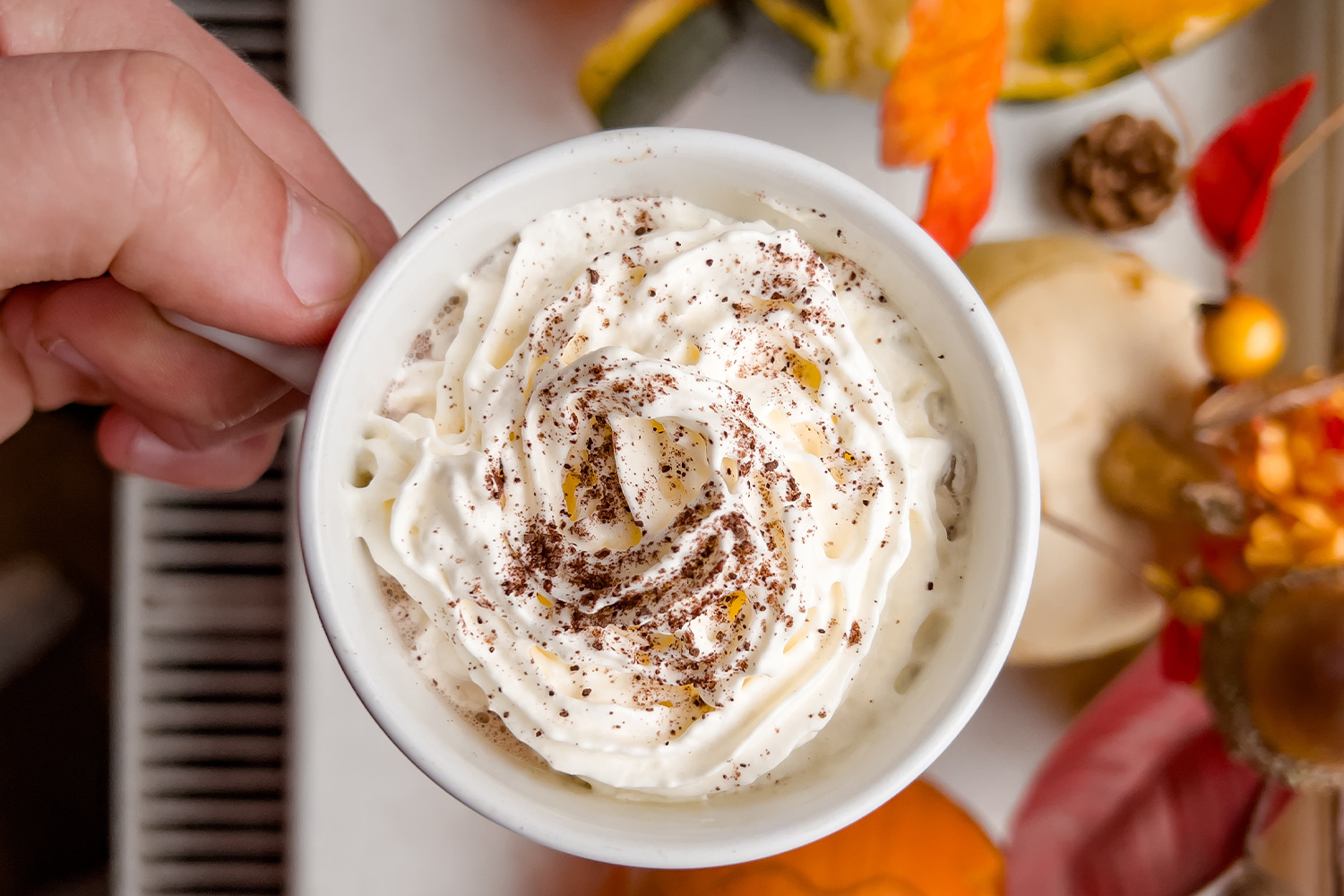UT Dallas Professors Spill the Beans on the Chemistry of Coffee
10.30.2023

When the weather turns cooler, local coffee shops are blanketed with orders for pumpkin spice lattes.
But did you know that the warm fuzzies you get when you drink the popular fall beverage have nothing to do with pumpkins? It’s all a scientific ruse — chemical compounds in the ingredients result in the brain recalling things like pumpkin pie or spiced cider, evoking memories related to the season.
“You don’t actually get pumpkin-spice flavoring from pumpkins,” said Dr. Ron Smaldone, associate professor of chemistry and biochemistry in the School of Natural Sciences and Mathematics at The University of Texas at Dallas. “It’s part of this experience when you taste something. It’s not just a chemical response; it’s also an emotional response or a response to experiences you’ve had.”
Smaldone and Dr. Christina Thompson, associate professor of instruction in the Hobson Wildenthal Honors College and a member of the Smaldone Research Lab, teach a Collegium V Honors course — Culinary and Food Chemistry — that explores food and cooking through a scientific lens.
As part of the Office of Research and Innovation’s Research Days showcase, the professors recently participated in a public forum focused on coffee. Gary Cocke, UT Dallas director of sustainability and energy conservation, gave an overview of sustainability in agriculture and the benefits of composting, while representatives from White Rock Coffee delved into the history of coffee and the bean-roasting process – while providing a variety of coffee drinks.
 Representatives from White Rock Coffee prepare a fresh brew for attendees of a recent Research Days showcase, hosted by the UT Dallas Office of Research and Innovation.
Representatives from White Rock Coffee prepare a fresh brew for attendees of a recent Research Days showcase, hosted by the UT Dallas Office of Research and Innovation.
Smaldone and Thompson focused on the chemistry involved in coffeemaking and how molecules from food and beverages can enhance the gastronomic experience.
“One part of eating or experiencing any kind of food is that you smell it,” Smaldone said.
Chemical receptors in the nose recognize molecules from food and send signals to the brain, resulting in a unique experience that often encodes a strong memory. A whiff of the same smell, even years later, can bring back that memory and its associated emotions, Smaldone said.
Thompson described the extraction process of coffee making and all the variables that can affect how a cup of coffee turns out, such as the temperature of the water used (95 degrees Celsius or 203 degrees Fahrenheit is optimal), how long the water and coffee are in contact, and the size of the coffee grounds.
“All those thousands of delicious little molecules are concentrated in a solid coffee bean, and we want to get them into a liquid,” Thompson said. “A cup of coffee is about 2% coffee and 98% water — that’s not a lot of coffee molecules. But your tongue — and really your nose — are excellent at tasting these things, so you don’t need very much.”
 Dr. Ron Smaldone (left) and Dr. Christina Thompson
Dr. Ron Smaldone (left) and Dr. Christina Thompson
Thompson said very fine grinds have a lot of surface area, so they extract flavors quickly. Meanwhile, larger grounds have less surface area, so they need more time.
“Less-extracted coffee tends to have more of a sour, thin taste because you are missing out on the larger, slower extracting molecules that tend to have more of the caramel, toast and smoky attributes,” Thompson said. “On the other extreme, over-extracted coffee tends to be bitter and taste a bit like charcoal because you’ve extracted too many of those large flavor molecules that have those flavor profiles.”
The key takeaway: Find the right combination of grind size and extraction time so that the coffee comes out the way you want.
“Most home drip coffeemakers have a set amount of time the coffee is in contact with the hot water, so you can tune the coffee’s flavor by changing the amount of coffee you add or how finely you grind it,” Thompson said.
Thompson’s favorite coffees are medium roasts with nut flavors, while Smaldone prefers dark-roasted coffee — it’s less acidic — with malty and caramel flavors.
–Paul Bottoni
Tags: Dr. Christina Thompson, Dr. Ron Smaldone, Honors College, NSM, Research